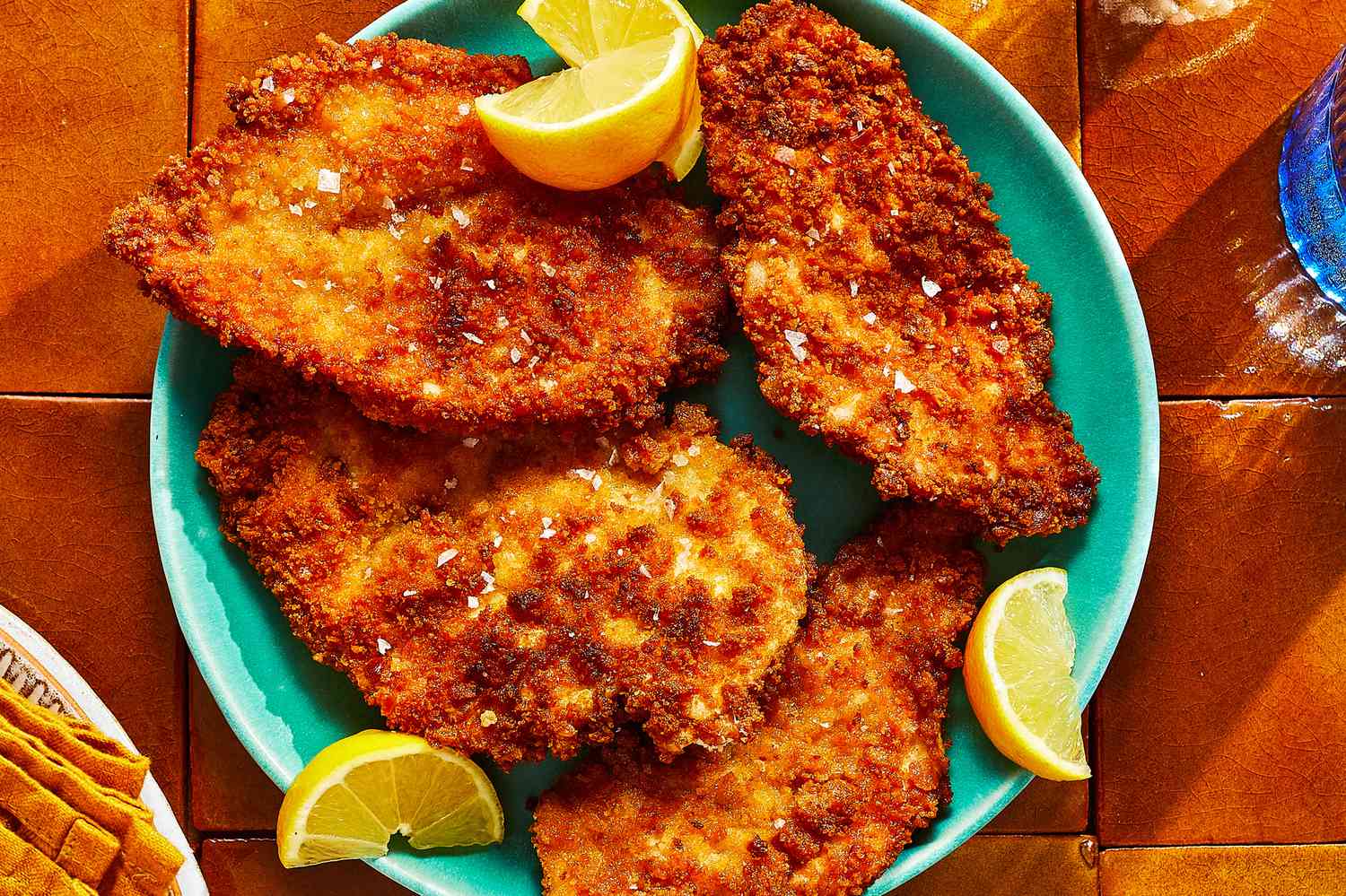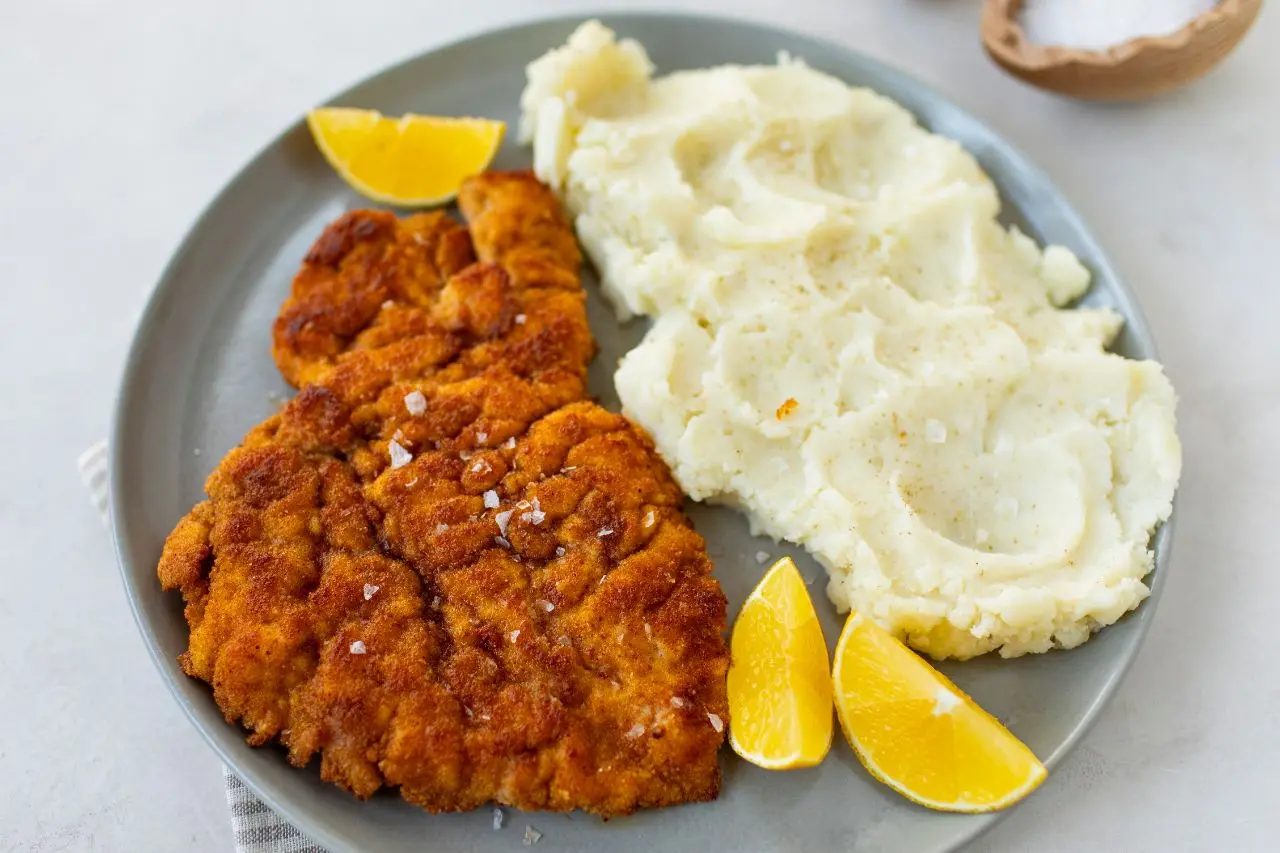List Of Contents
- 1 The Origins of Schnitzel
- 2 Ingredients for the Perfect Schnitzel
- 3 Preparing Schnitzel: A Step-by-Step Guide
- 4 Exploring Schnitzel Variations
- 5 The Cultural Significance of Schnitzel
- 6 Health Benefits of Schnitzel
- 7 Embracing Schnitzel in Modern Cuisine
- 8 Conclusion: Savoring the Schnitzel Sensation
- 9 Author
Schnitzel, a beloved dish with a rich history, has captivated food enthusiasts around the globe with its irresistible crispy exterior and tender, flavorful interior. This culinary delight, traditionally made from thinly pounded meat, breaded, and fried to perfection, offers a symphony of textures and tastes that make it a true gastronomic sensation. In this article, we will explore the origins, preparation, variations, and cultural significance of Schnitzel, guiding you to discover the ultimate crispy delight.
The Origins of Schnitzel

Schnitzel’s origins can be traced back to Austria, where it is known as Wiener Schnitzel. This classic dish is traditionally made from veal and has been a staple of Austrian cuisine since the 19th century. The name “Schnitzel” comes from the German word “schnitzen,” which means “to carve” or “to cut.” Over time, Schnitzel has evolved and spread to various regions, each adding its unique twist to this timeless dish.
Wiener Schnitzel: The Classic Austrian Delight
Wiener Schnitzel, the quintessential Schnitzel, is made from thinly pounded veal cutlets, coated in breadcrumbs, and fried until golden brown. This dish is a symbol of Austrian culinary tradition and is often served with a wedge of lemon, potato salad, or lingonberry jam. The key to an authentic Wiener Schnitzel lies in the quality of the veal and the meticulous preparation process.
Ingredients for the Perfect Schnitzel
Creating the perfect Schnitzel requires a few essential ingredients, each contributing to the dish’s signature flavor and texture. Let’s take a closer look at what you’ll need to make this crispy delight.
Meat: The Foundation of Schnitzel
The choice of meat is crucial for a delectable Schnitzel. While veal is the traditional choice for Wiener Schnitzel, pork, chicken, and turkey are also popular alternatives. The meat is typically pounded thin to ensure even cooking and a tender texture.
Breading: The Secret to Crispy Perfection
The breading process involves three key steps: dredging the meat in flour, dipping it in beaten eggs, and coating it with breadcrumbs. This triple-layered breading creates the crispy exterior that defines Schnitzel. Fresh breadcrumbs or panko are often used to achieve the best results.
Seasoning: Enhancing the Flavor
A simple seasoning of salt and pepper is usually sufficient for Schnitzel, allowing the natural flavors of the meat to shine. Some recipes may also include a hint of paprika or garlic powder for an added kick.
Oil: The Frying Medium
Using the right oil for frying is essential to achieve a golden, crispy Schnitzel. Neutral oils like vegetable oil, canola oil, or clarified butter (ghee) are ideal choices. The oil should be heated to the right temperature to ensure the Schnitzel cooks evenly without becoming greasy.
Preparing Schnitzel: A Step-by-Step Guide

Making Schnitzel at home is a rewarding culinary adventure that results in a mouthwatering dish. Follow these steps to prepare the ultimate Schnitzel sensation.
Step 1: Pound the Meat
Place the meat between two sheets of plastic wrap or parchment paper. Using a meat mallet or rolling pin, gently pound the meat to an even thickness, about 1/4 inch. This step ensures the Schnitzel cooks evenly and remains tender.
Step 2: Set Up the Breading Station
Prepare three shallow dishes for the breading process. Fill one with flour, one with beaten eggs, and one with breadcrumbs. Season the flour and breadcrumbs with salt and pepper.
Step 3: Bread the Schnitzel
Dredge each piece of meat in the flour, shaking off any excess. Dip it into the beaten eggs, allowing any excess to drip off. Finally, coat the meat with breadcrumbs, pressing gently to ensure an even coating.
Step 4: Fry to Golden Perfection
Heat the oil in a large skillet over medium-high heat. Once the oil is hot, carefully add the breaded Schnitzel to the pan. Fry each side for about 3-4 minutes, or until golden brown and crispy. Avoid overcrowding the pan to maintain the oil temperature.
Step 5: Drain and Serve
Once cooked, transfer the Schnitzel to a paper towel-lined plate to drain any excess oil. Serve immediately with your choice of accompaniments, such as lemon wedges, potato salad, or a side of vegetables.
Exploring Schnitzel Variations
While Wiener Schnitzel remains the gold standard, there are numerous variations of Schnitzel enjoyed around the world. Each version offers a unique twist on this classic dish, showcasing regional flavors and ingredients.
Jägerschnitzel: A Hearty German Favorite
Jägerschnitzel, or “hunter’s Schnitzel,” is a popular German variation typically made with pork or veal. It is served with a rich mushroom gravy, known as Jägersoße, made from mushrooms, onions, and sometimes bacon. This hearty dish is often accompanied by spaetzle or mashed potatoes.
Cordon Bleu: A Cheesy Delight
Cordon Bleu is a delicious variation that involves stuffing the Schnitzel with ham and cheese before breading and frying. The melted cheese and savory ham add an indulgent touch to the crispy exterior. This version is often made with chicken or pork.
Holstein Schnitzel: A Unique Twist
Holstein Schnitzel, named after Friedrich von Holstein, a German diplomat, is a unique version that includes a fried egg and anchovies on top of the breaded meat. This combination of flavors creates a distinctive and savory experience.
Japanese Katsu: An Asian Fusion
In Japan, Schnitzel takes on a new identity as Tonkatsu, made with pork and served with a tangy tonkatsu sauce. This version is typically enjoyed with shredded cabbage, rice, and miso soup. The Japanese adaptation highlights the versatility and global appeal of Schnitzel.
The Cultural Significance of Schnitzel
Schnitzel holds a special place in many cultures, symbolizing comfort, tradition, and culinary excellence. Let’s explore the cultural significance of this beloved dish in various regions.
Austria: A Culinary Heritage
In Austria, Wiener Schnitzel is more than just a meal; it is a cherished part of the country’s culinary heritage. This dish is celebrated in Austrian households and restaurants, often featured on special occasions and festive menus. The meticulous preparation and quality of ingredients reflect the pride Austrians take in their cuisine.
Germany: A Popular Staple
Schnitzel is a staple in German cuisine, enjoyed in homes and eateries across the country. It is commonly featured on menus in traditional German restaurants, beer gardens, and festivals. The hearty and satisfying nature of Schnitzel makes it a favorite comfort food for many Germans.
Switzerland: A Culinary Classic
In Switzerland, Schnitzel is known as “Schnipo,” short for Schnitzel and Pommes frites (fries). This dish is a beloved classic in Swiss cuisine, often served with a side of crispy fries and a fresh salad. It is a popular choice for family meals and casual dining.
Global Appeal: A Universal Delight
The appeal of Schnitzel extends far beyond its European roots. From North America to Asia, this dish has found its way into the hearts and kitchens of food enthusiasts worldwide. Its simplicity, versatility, and delectable taste make Schnitzel a universal delight that transcends cultural boundaries.
Health Benefits of Schnitzel
While Schnitzel is undoubtedly a delicious indulgence, it also offers several health benefits when prepared mindfully. Let’s explore the nutritional aspects of this crispy delight.
Protein-Packed Goodness
Schnitzel, made from lean cuts of meat such as chicken, pork, or veal, is a great source of protein. Protein is essential for muscle repair, growth, and overall body function. Incorporating protein-rich foods like Schnitzel into your diet can support a healthy lifestyle.
Nutrient-Rich Ingredients
When paired with wholesome sides like fresh vegetables and salads, Schnitzel can be part of a balanced meal. Vegetables provide essential vitamins, minerals, and fiber, while the meat offers iron, zinc, and B vitamins.
Customizable and Versatile
One of the benefits of Schnitzel is its versatility. By choosing lean cuts of meat, using whole-grain breadcrumbs, and opting for healthier cooking methods like baking or air frying, you can create a lighter version of this classic dish without compromising on flavor.
Embracing Schnitzel in Modern Cuisine

Schnitzel has seamlessly integrated into modern cuisine, inspiring chefs and home cooks to experiment with new flavors and techniques. Here are a few contemporary ways to enjoy Schnitzel in today’s culinary landscape.
Gourmet Schnitzel Creations
Chefs in upscale restaurants are putting a gourmet spin on traditional Schnitzel, incorporating high-quality ingredients and innovative presentations. Think truffle-infused breadcrumbs, herb-crusted Schnitzel, or a fusion of international flavors that elevate this classic dish to new heights.
Schnitzel Sliders and Sandwiches
Schnitzel sliders and sandwiches are becoming popular in casual dining and food truck scenes. These handheld delights feature mini Schnitzel patties served in buns with various toppings like coleslaw, pickles, and aioli. They offer a convenient and flavorful way to enjoy Schnitzel on the go.
Plant-Based Schnitzel
With the rise of plant-based diets, vegan and vegetarian Schnitzel alternatives have gained popularity. These versions use ingredients like tofu, seitan, or mushrooms to replicate the texture and flavor of traditional Schnitzel. Plant-based Schnitzel allows everyone to enjoy this crispy delight, regardless of dietary preferences.
Schnitzel Bowls
Schnitzel bowls are a modern take on this classic dish, featuring a deconstructed version served over a bed of grains, vegetables, and sauces. These bowls offer a well-balanced and visually appealing meal that combines the flavors and textures of Schnitzel with fresh, wholesome ingredients.
Conclusion: Savoring the Schnitzel Sensation
Schnitzel is more than just a dish; it is a culinary experience that brings joy and satisfaction to those who indulge in its crispy delight. From its origins in Austria to its global variations, Schnitzel has earned its place as a beloved comfort food cherished by many.
Whether you enjoy a classic Wiener Schnitzel, a situstoto login hearty Jägerschnitzel, or a creative modern interpretation, the key to a perfect Schnitzel lies in the quality of ingredients and the care taken in its preparation. So, gather your ingredients, follow the steps, and embark on a culinary journey to discover the ultimate Schnitzel sensation.

